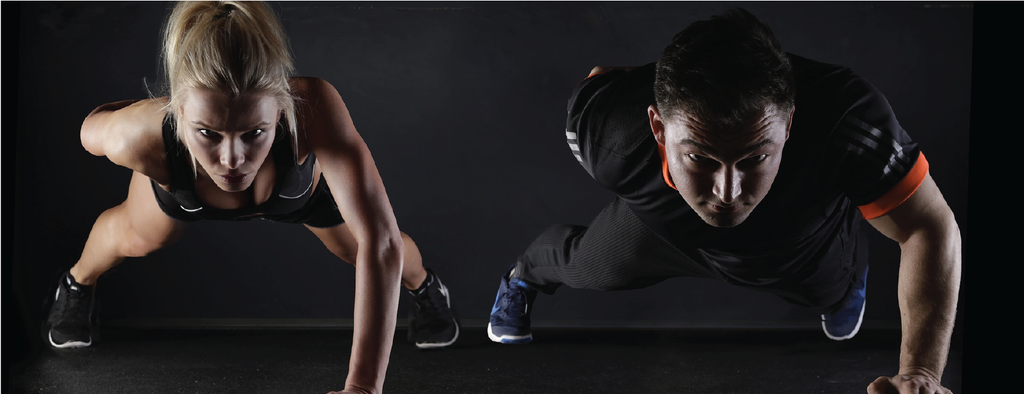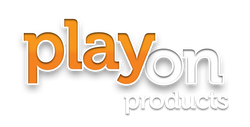
How can I get ripped without equipment?
For some people access to workout equipment can be a problem, if you don't have the time to go the gym between work commitments, looking after the kids and your social life, or home gym equipment is not in the budget, this blog is for you.
There are a variety of ways to get the ripped body you are after without equipment. You can build a ripped and toned muscular body by using tried and true calisthenic exercises, getting in high intensity aerobic exercise and adhering to a healthy diet plan that supports your body’s needs. Proof of the effectiveness of this method of training comes from mankind’s history, ancient humans maintained lean fit bodies without the use of modern gym equipment and so can you!
Burning fat without losing muscle
One of the keys to building a ripped body is burning fat without losing muscle. This can be a complicated proposition, one of the best ways to reduce fat is to be in a caloric deficit, in other words to take in less calories than you burn on a daily basis. The problem with this is that your body will naturally lose muscle once you are in a caloric deficit. This is a bit of a catch 22 for people looking to tone up quickly.
Heather A. Milton, a senior exercise physiologist at NYU Langone’s Sports Performance Center says “If you achieve a caloric deficit to lose weight solely by cutting calories, you will lose a similar percentage of weight from fat as from muscle. However, you can manipulate the way the two types of body tissue, fat and muscle, are being lost during a caloric deficit by creating that deficit in a different way,”
Cutting fewer calories is the obvious solution to this problem, a smaller caloric deficit will help you reduce weight slowly which in turn helps to preserve muscle mass whilst still burning that unwanted fat. In one study two groups of athletes were put on two different weight loss regimes. One group was put on a fast weight loss plan and the other a slow weight loss plan. The group that was put on the fast weight loss plan had a loss of muscle mass whilst the group that was put on the slow weight loss plan gained muscle mass. The fast weight-loss group lost 7 pounds of fat and 0.66 pounds of lean mass and the slow weight-loss group lost 11 pounds of fat and gained 2 pounds of lean mass. - https://www.ncbi.nlm.nih.gov/pubmed/21558571
Body-Weight Exercises
Body weight exercises, also referred to as calisthenics include, but are not limited to, pushups, pullups, chinups, situps, dips, squats, lunges, abdominal planks and crunches, burpee’s and sprints. The types of exercises you choose are very important when it comes to reducing fat and building muscle. Cardio exercise works on aerobic muscle fibres which can help you lose weight but will not necessarily change your muscle mass. Strength training and resistance training however can help you to build muscle whilst in caloric deficit. Many studies have in fact shown that resistance training is effective at reducing declines in muscle mass and can trigger the short term production of hormones such as human growth hormone and testosterone.
For any noticeable muscle gains you should train at least 3 days a week using your entire body weight to maximise your resistance training. Exercises such as pull ups often use more muscle than loading up a barbell because you are lifting your entire body weight rather than just the weight loaded onto a bar.
Your work out regime will depend on your level of fitness, but to begin with try this workout from wikihow,(https://www.wikihow.fitness/Get-Ripped-Quickly-Without-Money-or-Equipment) alternate the upper and lower body portions between days. If its to easy for you simply up the intensity!
Upper Body
- Push ups - Do a couple of sets of at least 10 repetitions with your palms at standard, wide, and under-chest positions. Work your way up to doing 20 reps per set at each position.
- Planks - Do a couple of sets of at least 10 repetitions with your palms at standard, wide, and under-chest positions. Work your way up to doing 20 reps per set at each position.
- Chinups - If you cannot do a single pull-up, focus on doing negative pull-ups, where you start yourself at the top position with your chin above the bar and then lower yourself as slowly as you can till you are hanging from the bar. Do sets of these, working your way up to 3 sets of around 6 negatives, or until you are able to do a regular pull up.
- Torso Rotations - Start in a standard push-up position with your palms in line with your straightened elbows and shoulders. Rotate your hips and slightly bend your knees so they face your right side, hold for a count of 10, then rotate them to your left side. Rest for 30 seconds then repeat at least twice.
- Reverse Crunches - Lay on your back with your hands by your sides. Extend your legs straight and slowly lift them about 6 inches (15 cm) off the ground. Bring your knees to your chest, hold for a couple of seconds, then slowly straighten them and return them to the floor.
- Table Exercise - Start by sitting on the floor with your legs bent in front of you. Your feet should be shoulder distance apart and flat on the floor, and your arms should be just behind you with your elbows straight and palms flat on the floor with fingers facing your feet. Lift your hips off the ground so your knees bend at a 90 degree angle and keep your back straight. Hold the pose for 10 seconds, lower your hips back to the floor, then repeat 10 times.
Lower Body
- Glute Bridges - Lie on the floor face up, then bend your knees at about 90 degrees and keep your feet flat on the floor. Then lift your hips up and off the ground as high as your comfortably can, squeezing your glutes to engage them. Hold this position for a few seconds and then repeat.
- Waist Whittler - Start by lying on your right side with your right leg slightly bent and your left leg straight. Hold your elbows bent in front of you with your right hand in a fist and your left hand cupped over it. Keeping your hips on the floor and elbows bent, lift your torso up by pushing off your right elbow as you raise your left leg and elbow toward the ceiling. Do 15 repetitions, switch sides, then repeat.
- Squats - Position your legs shoulder distance apart with your toes slightly turned out and keep your weight on your heels. Place your hands behind your head, so your shoulders are drawn back, and your chest is lifted. Drive your butt backward as you lower yourself toward the floor with your knees bent in line with your toes until your thighs are parallel with the floor. Do repetitions for a minute, rest for 30 seconds, then repeat.
- Lunges and Reverse Lunges - Stand with your feet shoulder distance apart and your arms in front of you with your elbows bent and palms out, as if you were feeling an imaginary wall. Step forward and bend your knee until it’s at a 90-degree angle, return to a standing position, then repeat with the other leg. Do lunges for a minute, rest for 30 seconds, then repeat.
- Calf Carver - Start by standing with your hands held behind your head, then lift your right knee to hip level with your right toes pointed toward the ground. Lift your left heel off the floor and balance on the ball of your foot as you contract your abs. Hold the pose for a few seconds and lower your left heel back to the floor to complete one repetition. Do 15 reps, switch legs, then repeat.
For a more thorough overview head to - https://www.wikihow.fitness/Get-Ripped-Quickly-Without-Money-or-Equipment
Cardio
When training cardio it is best to avoid the problems we mentioned earlier with burning through muscle and fat at the same time. One way to do this High- intensity interval training. This includes running sprints and cycling sprints. HIIT recruits muscles fibers that guard against muscle loss, meaning you can burn away that unwanted fat without damaging your gains! Higher intensity workouts also keep your metabolism elevated for a longer period of time after your workout than low intensity workouts. When working out with HIIT it is important to use the right work to rest ratio. According to research done by Smith-Ryan, using the right ratio can help to significantly increase muscle gains over time. People who spent the same amount of time resting in between each bout of exercise (1:1) had greater gains than those who rested less (2:1).
Try this work out from - https://au.askmen.com/sports/bodybuilding_1000/1041_get-ripped-with-no-equipment.html
- - 8 x 100m sprints with 1:1 interval (rest/walk as long as your sprint took)
- - 4 x 200m sprints with 1:1 interval (rest/walk as long as your sprint took)
- - 2 x 400m sprints with 2:1 interval (rest/walk half as long as your sprint took)
- - 1 x 800m sprint
Diet Plan
Diet is an important part of any workout routine, when trying to lose weight and gain muscle at the same time it is even more important. High protein is one of the main ways to ensure your body is getting what it needs. In a study of men who were cutting calories and working out, it was found that those who had high protein intake lost 4.78 kilos of fat and gained 1.19 kilos of muscle. Those who followed a low protein diet and had the same amount of calories lost 3.49 kilos of fat and gained only 100 grams of muscle. This goes to show just how important it is to be smart about weight loss and building muscle, calorie counting isn't the be all and end all of weight loss. Rather we need to be mindful of the types of calories we put into our bodies and how they affect our fitness regimes. Eating healthy nutritious food to support your body paired with consistent and thought out exercise is far more effective over time than starving yourself, training hard and hoping for the ripped body so many of us desire.

Mark
This looks very helpful! Thanks!
Caleb johnson
Thanks, I’ll be working on it
Elchapa
This program is really and it really works….
I really appreciate it